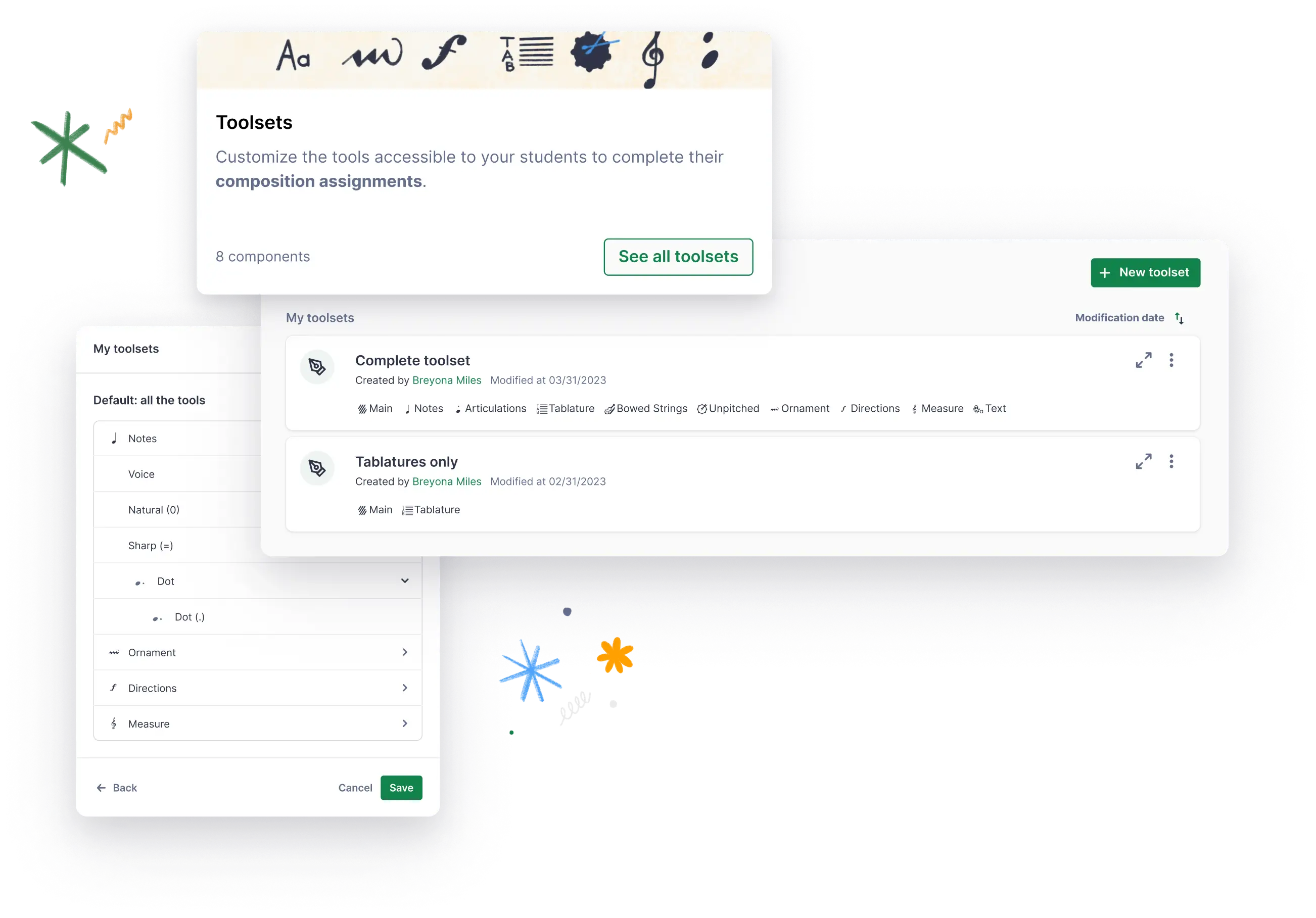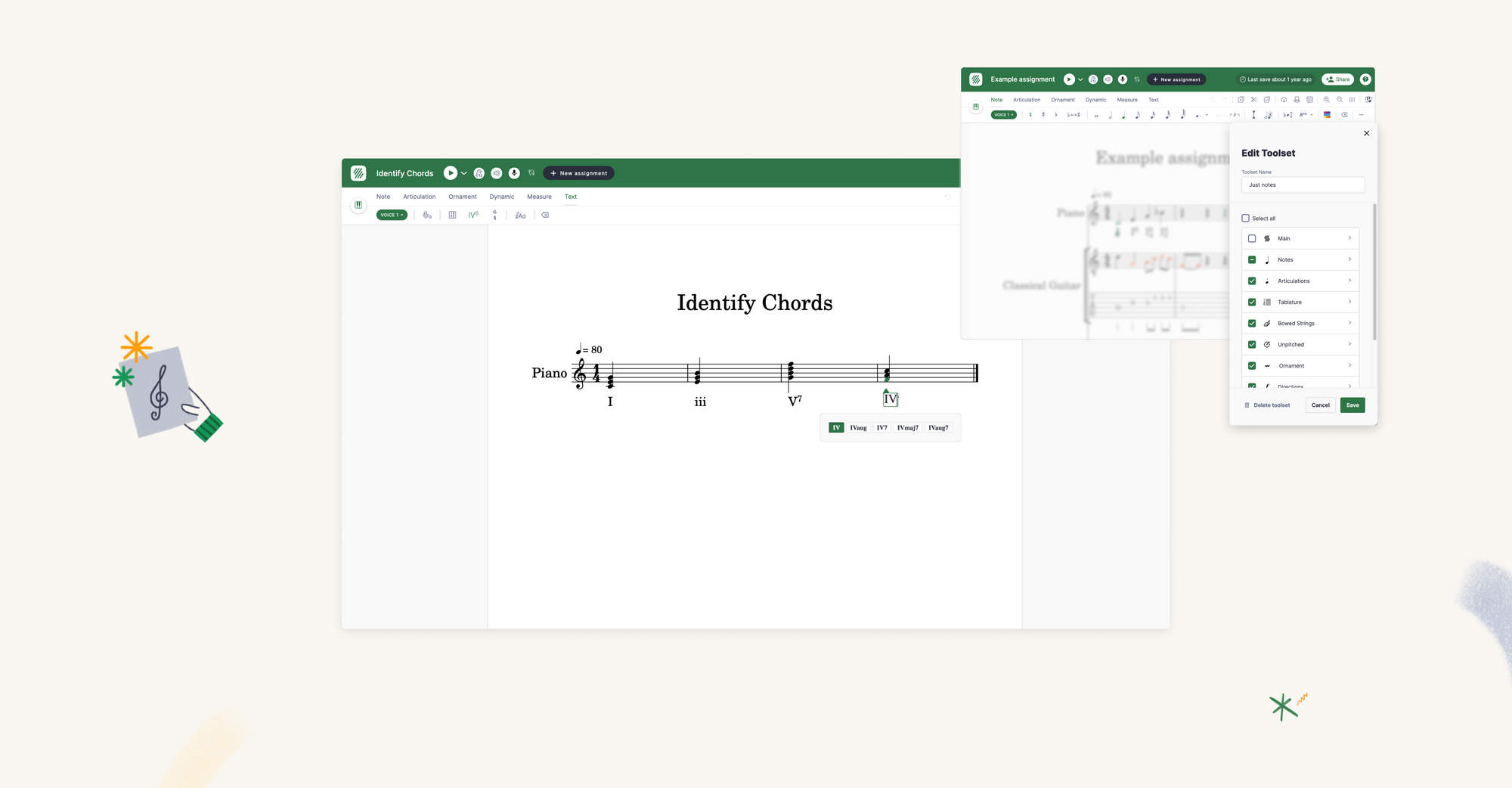Flat for Education has a variety of features designed to give teachers creative, engaging ways to improve their students’ music skills. In this article, we’ll look at Composition: individual and collaborative writing, benefits, assignment examples, and more!
Over the years, Flat for Education has expanded its scope and features, always trying to find new ways to support music teachers and their students. At its heart, though, the project began with composition, wanting to help music lovers write music in an easier, more collaborative way.
*Tip: If you finish this article and still have questions, check out our Help page for more technical details on using Composition and Flat for Education in general. If you are interested in the video tutorials, please visit this link.
Using composition in your classroom
You can create a composition assignment where students begin either from a blank score or a template of your choosing. There is a full set of potential tools – notes, articulations, bowed strings, and many more – from which you can select, letting you restrict or expand the exercise to fit your learners and current goals. Students can also work on a score individually or as part of group work – as the teacher, you’re always in control of how you want the assignment to be carried out.
A Mozart-inspired composition assignment using the colored notes feature
💡Tip: To make sure your students are really paying attention and training their ears, you can limit the number of times that the score can be played back during the assignment.
Between Flat for Education’s built-in sample composition assignments and the free-form instructions that you provide, there’s a virtually endless variety of possible composition assignments. Did you know that you could also limit the editor tools available to your students? This easy hack allows you to control the features they can access within the editor, tailoring your coursework even more. Last but not least, the Resource Library allows you to store, categorize, and reuse assignments over time.

Benefits
- Controlled: It can be intimidating to simply sit down in front of a blank screen and start writing; by restricting the tools available in a given assignment, you can help students to concentrate and get started using a particular set of musical options.
- Fun: When composing, students can let their imagination run wild, worrying less about theory and more about how a piece makes them feel.
- Varied: By deciding on genres, themes, and instruments at the beginning of an assignment, you can have students extend their range and knowledge of different eras and musical practices.
💡Tip: With many different instruments available for playback, students can hear different versions of how their composition sounds. You can also decide if specific instruments should be used for a specific composition assignment.
Some lesson ideas
- With younger students, have them compose 3-letter words using the letters of the musical alphabet; then have them insert their words into a blank score and play them back, letting them hear what their “words” sound like!
- Composition doesn’t just mean writing from scratch - use a template and the “Find the mistakes!” function to have students identify and fix mistakes in a score.
- Whether it’s Liszt or Lizzo, if your students have a particular song that they love, use a selection of that song to prepare composition assignments, such as practicing rhythm by writing the counts out using the text function.
💡Tip: Our YouTube channel has a series of videos to help inspire music lesson ideas - check them out!
A word from your fellow teachers
“My choir students range from future music majors to students who just want an “easy class", so designating time to write their own music can be challenging (since some want to create a masterpiece, others just want to meet the objectives as fast as possible). The greatest benefit has been that the students do enjoy getting to create their own music and the software levels the playing field a little bit in that you can hear what you write down rather than needing to know an instrument to hear what you're creating.”
– [C.J., Music Educator from the USA]
“With easy-to-set assignments & easy integration with our existing systems, I now use Flat for Education to set compositional tasks where students need to submit notation for assessment. Students are asked to arrange parts for varying instrumentalists, to develop their understanding of harmony, to re-harmonize, and more.”
– [M.D., Music Educator from the UK]
As always, if you have questions or feedback, please email us at edu@flat.io 💚
